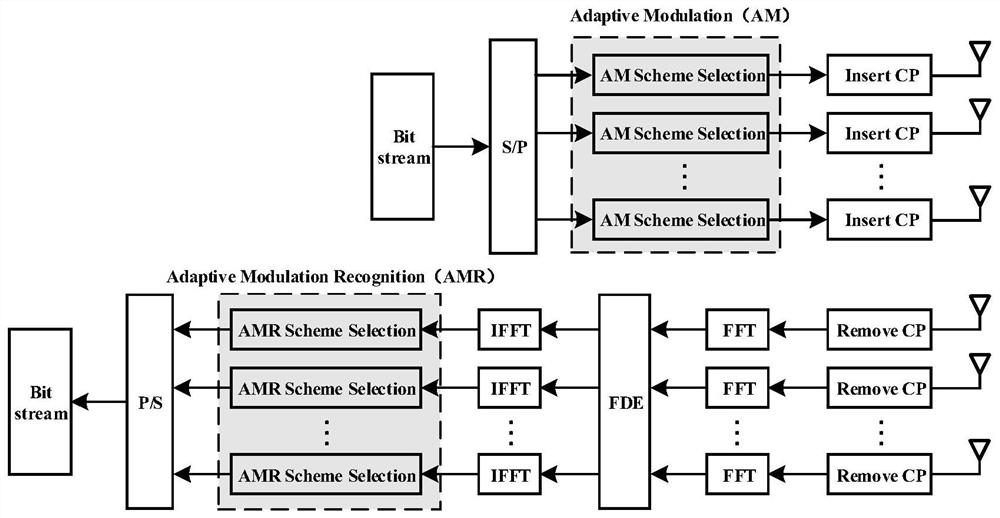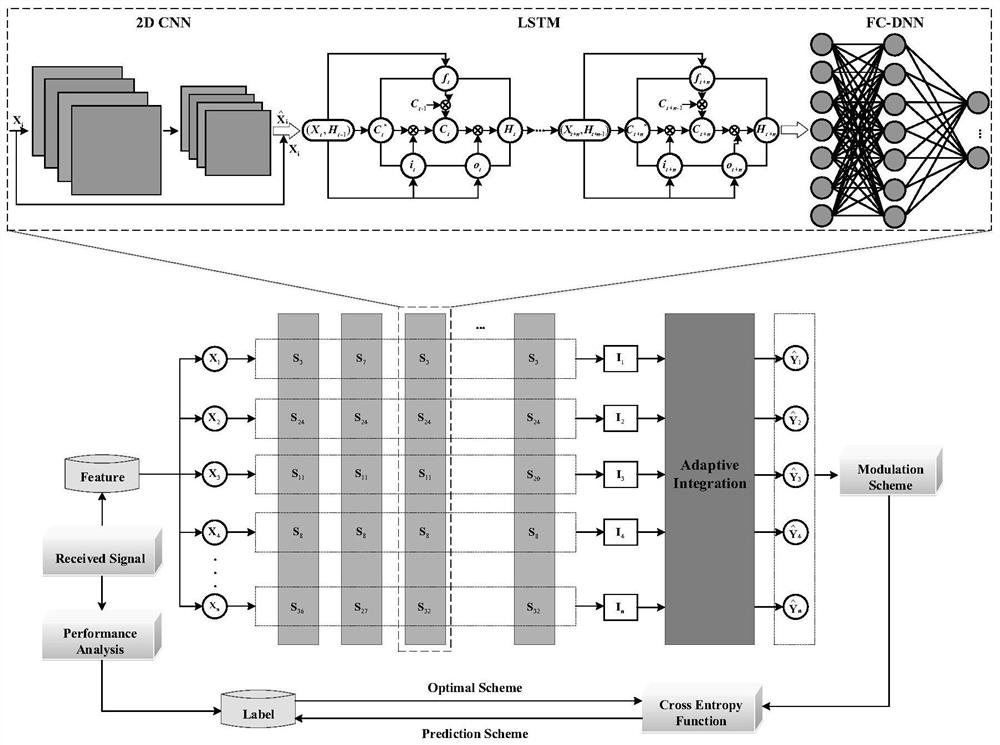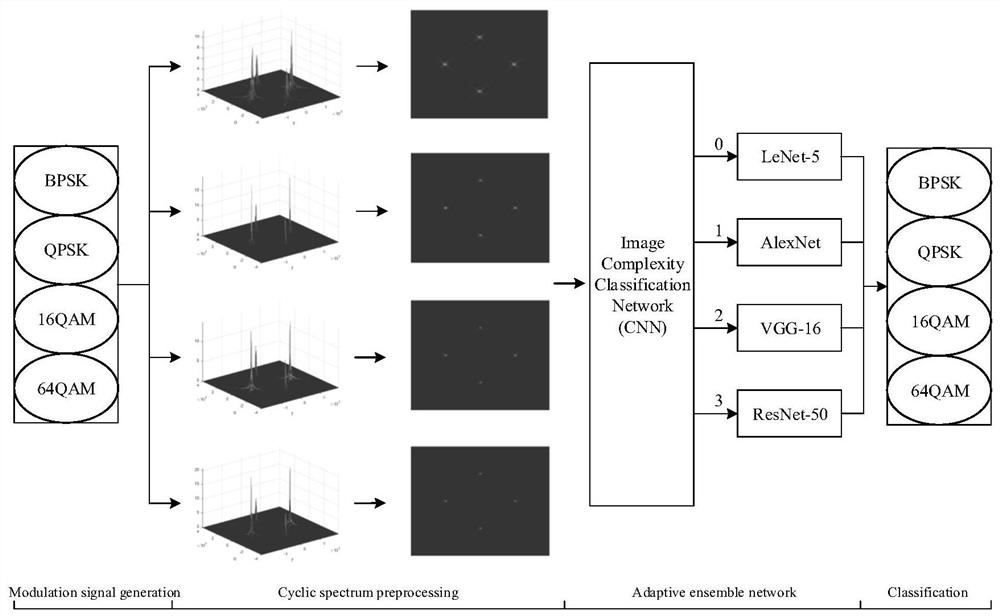MIMO-SCFDE (Multiple Input Multiple Output-Synchronized Frequency Division Multiplexing Element) self-adaptive transmission method based on model-driven deep learning
A MIMO-SCFDE, adaptive transmission technology, applied in the field of intelligent communication, can solve the problems of low throughput and reliability
- Summary
- Abstract
- Description
- Claims
- Application Information
AI Technical Summary
Problems solved by technology
Method used
Image
Examples
Embodiment Construction
[0029] The present invention will be described in further detail below in conjunction with the examples, but the protection scope of the present invention is not limited thereto.
[0030] The invention relates to a MIMO-SCFDE adaptive transmission method based on model-driven deep learning, and the model-driven MIMO-SCFDE system model is as follows figure 1 As shown, the method includes the following steps.
[0031] Step 1: Generate the data set required for the depth model based on the MIMO-SCFDE wireless communication system framework. The feature information of the data set comes from the characteristics of the received signal extracted at the receiving end. The labels identified by adaptive modulation and adaptive modulation mode are the combination of different inter-antenna modulation modes and the four modulation modes of BPSK, QPSK, 16QAM and 64QAM, respectively.
[0032] In the step 1, the specific implementation process of the MIMO-SCFDE wireless communication syste...
PUM
 Login to View More
Login to View More Abstract
Description
Claims
Application Information
 Login to View More
Login to View More - R&D
- Intellectual Property
- Life Sciences
- Materials
- Tech Scout
- Unparalleled Data Quality
- Higher Quality Content
- 60% Fewer Hallucinations
Browse by: Latest US Patents, China's latest patents, Technical Efficacy Thesaurus, Application Domain, Technology Topic, Popular Technical Reports.
© 2025 PatSnap. All rights reserved.Legal|Privacy policy|Modern Slavery Act Transparency Statement|Sitemap|About US| Contact US: help@patsnap.com



